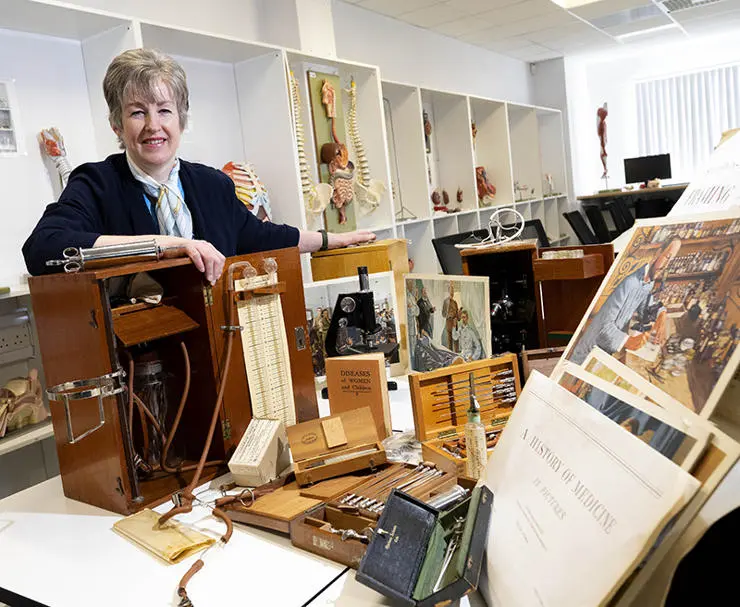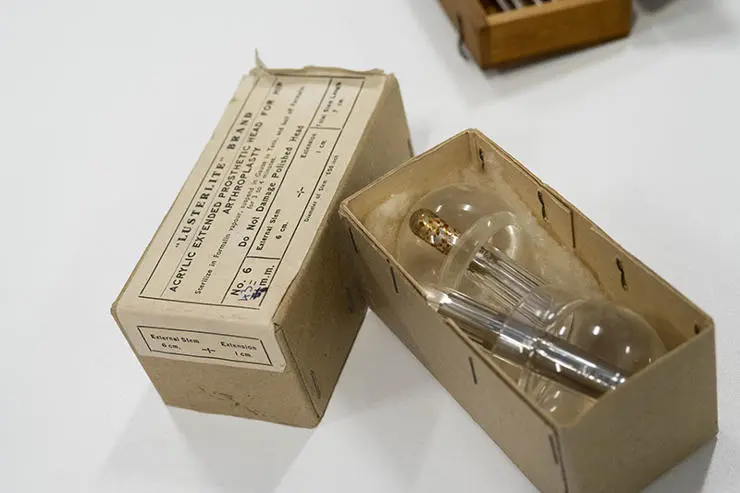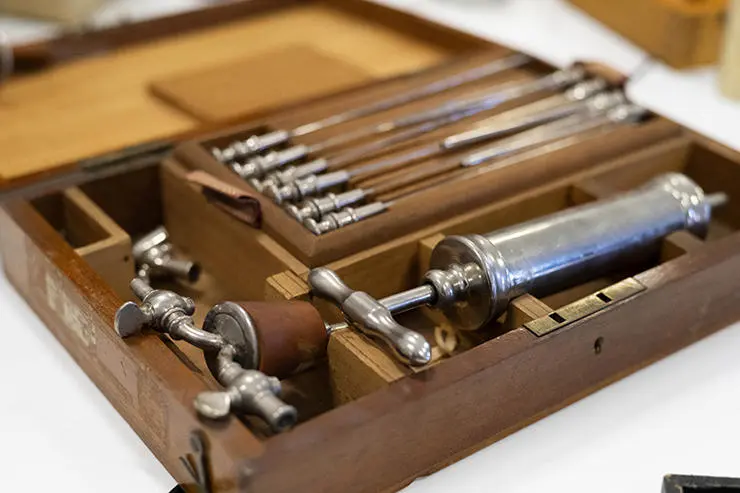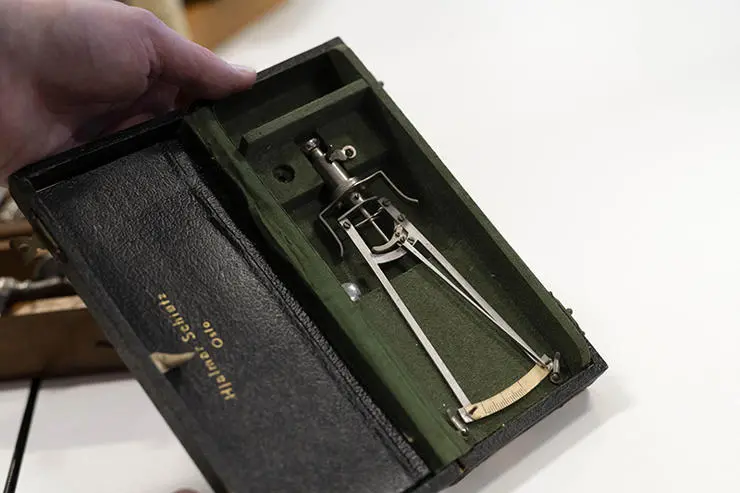School of Nursing treasure trove provides insight into early 20th century health care
Medical equipment and nursing training reports dating back almost a hundred years have been discovered at the University of Central Lancashire (UCLan).
Items, including a pair of Tudor Edwards Spectacles that were used to administer oxygen until the 1950s and an acrylic hip joint from around the same period, were found at the back of a storage cupboard in the School of Nursing.
The discovery was made by the School’s Clinical Skills Technician Karen Colton whilst clearing out a storeroom. Other items include a metal syringe kit and steriliser from the1960s, a premature baby feeder, a ceramic inhaler, an X-Tonometer, which is used to measure eye pressure and was designed by Professor Schiotz in the early 1900s, and a variety of medical books.
"It’s absolutely fascinating to see how medical equipment and our attitudes to illness and treatment has changed over time. What struck me the most is the change in how we sterilised and reused medical equipment compared to single use plastic in modern medicine. "
— Clinical Skills Technician Karen Colton who made the discovery
Karen said: “I just thought, what on earth is this? Everything was hidden in crates at the back of a cupboard and it took me a few moments to realise what I was looking at. It’s absolutely fascinating to see how medical equipment and our attitudes to illness and treatment has changed over time. What struck me the most is the change in how we sterilised and reused medical equipment compared to single use plastic in modern medicine.
“The first item I saw was a book called Diseases of Women and Children that we suspect was published in the early 20th century. This really was of its time and provides a fascinating insight into how women’s health and role in society were perceived.”
The book, which includes a drink recipe to alleviate menopause systems, provides an overview of ‘womanhood’, suggesting “she, with her little ones prattling at her knees, is the culmination of man’s highest ideals of peace, love and perfect happiness.”
"This is a really exciting find for the School of Nursing and reflects UCLan’s long-standing relationship with the nursing profession in the region."
— Andrew Melling, Head of the UCLan School of Nursing
The treasure trove also revealed handwritten explanations of the modules studied by trainee nurses from Blackpool Victoria Hospital, dating back as far as 1932. They list various lectures that students attended, such as infectious diseases, the nursing of pneumonia and Materia Medica, which is a Latin term relating to the history of pharmacy.
Andrew Melling, Head of the UCLan School of Nursing, said: “This is a really exciting find for the School of Nursing and reflects UCLan’s long-standing relationship with the nursing profession in the region.
“The way we teach nursing has of course moved on in the UK. Our own School of Nursing was established in 1990 and we’re now able to teach in an immersive way in classrooms that simulate the environment our future nurses will be working in - whether that’s an operating theatre, the patient’s own home or a mock-hospital ward working with adult and infant mannequins.
"... although the technology has moved on, the fundamentals of nursing are still the same and allowing students to gain practical experience was clearly the focus of nurse education all those years ago."
— Andrew Melling, Head of the UCLan School of Nursing
“However, although the technology has moved on, the fundamentals of nursing are still the same and allowing students to gain practical experience was clearly the focus of nurse education all those years ago.”
It’s unclear exactly how the artefacts came to be stored at UCLan, as the Greenbank building where they were found was only built in 1998. Anyone who may be able to shed some light on where the equipment may have come from can contact UCLan via it’s press office.
All of the handwritten reports and training summaries have now been transferred to the University archives to be retained for historical significance, and the School of Nursing now plans to showcase some of the medical equipment in a display cabinet in Greenbank Building.







